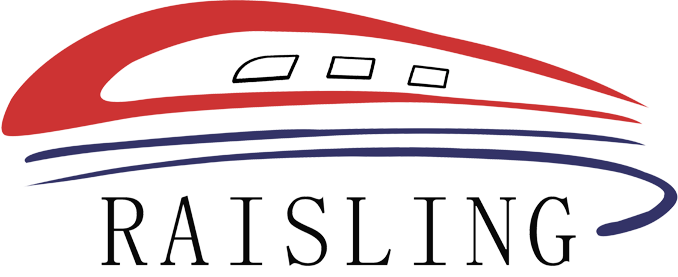How Rail Fasteners Work: A Deep Dive into Their Mechanics
Jun 07,2025
How Rail Fasteners Work: A Deep Dive into Their Mechanics Table of Contents 1. Introduction to Rail Fasteners 2. Importance of Rail Fasteners in Rail Infrastructure 3. Types of Rail Fasteners 3.1 Bolted Rail Fasteners 3.2 Welded Rail Fasteners 3.3 Elastic Rail Fasteners 3.4 Specialized Rail Fasteners 4. How Rail Fasteners Work: The Mechanics 5. Installi

How Rail Fasteners Work: A Deep Dive into Their Mechanics
Table of Contents
- 1. Introduction to Rail Fasteners
- 2. Importance of Rail Fasteners in Rail Infrastructure
- 3. Types of Rail Fasteners
- 3.1 Bolted Rail Fasteners
- 3.2 Welded Rail Fasteners
- 3.3 Elastic Rail Fasteners
- 3.4 Specialized Rail Fasteners
- 4. How Rail Fasteners Work: The Mechanics
- 5. Installing Rail Fasteners: Best Practices
- 6. Maintenance of Rail Fasteners
- 7. Innovations in Rail Fastener Technology
- 8. FAQs about Rail Fasteners
- 9. Conclusion
1. Introduction to Rail Fasteners
Rail fasteners are vital components that hold the rails to the sleepers, ensuring the railway tracks remain stable and secure under the immense pressures of moving trains. Understanding their mechanics is essential for railway engineers, contractors, and maintenance crews, as these devices play a pivotal role in the safety and efficiency of rail transport. This article delves into the different types of rail fasteners, their functions, and how they work in concert to support rail infrastructure.
2. Importance of Rail Fasteners in Rail Infrastructure
The stability of railway tracks relies heavily on the functionality of rail fasteners. These components absorb vibrations, mitigate the forces generated by moving trains, and maintain the alignment of the track. The failure of rail fasteners can lead to derailments, unsafe conditions, and significant financial losses in repairs and downtime. Therefore, their design and maintenance are critical to the overall safety and reliability of rail transportation systems.
3. Types of Rail Fasteners
Rail fasteners come in various types, each serving unique purposes and applications in the rail industry. Understanding these types is crucial for selecting the right fasteners for specific projects.
3.1 Bolted Rail Fasteners
Bolted rail fasteners are one of the most common types used in railway construction. They consist of bolts and nuts that secure the rail to the sleeper. These fasteners provide a strong, rigid connection and are easily adjustable, allowing for effective track alignment. Bolted fasteners are particularly effective in heavy haul applications where high forces act on the track.
3.2 Welded Rail Fasteners
Welded rail fasteners provide a permanent connection between the rail and sleeper, offering excellent stability. This type of fastening is often used in environments where maintenance access is limited, such as in tunnels or high-speed rail systems. The welded connection helps in reducing the chances of track misalignment over time.
3.3 Elastic Rail Fasteners
Elastic rail fasteners utilize resilient materials to provide flexibility while maintaining track stability. These fasteners absorb vibrations and noise, enhancing passenger comfort and reducing wear on rail components. They are increasingly popular in urban transit and high-speed rail systems due to their ability to dampen vibrations effectively.
3.4 Specialized Rail Fasteners
Specialized rail fasteners are designed for specific applications or conditions. These can include fasteners resistant to corrosion, shock, or extreme temperatures. They are essential for ensuring the longevity of rail systems in harsh environments, such as coastal areas or regions with extreme weather conditions.
4. How Rail Fasteners Work: The Mechanics
Rail fasteners work by distributing the load of the train evenly across the rail and sleeper. This load distribution is crucial in preventing localized deformation, which can lead to track instability.
When a train passes over the track, it exerts substantial forces on the rails. Rail fasteners absorb these dynamic loads through a combination of tension and compression. Bolted fasteners, for instance, rely on the friction between the bolt and rail to maintain their grip, while elastic fasteners utilize the inherent flexibility of their materials to accommodate motion without compromising stability.
Furthermore, rail fasteners interact with other components of the rail system, such as rail pads and insulators, to enhance overall performance. The integration of these elements contributes to a well-functioning railway that can withstand the rigors of daily operations.
5. Installing Rail Fasteners: Best Practices
Proper installation of rail fasteners is crucial to ensure their effectiveness and longevity. Here are some best practices to consider:
- **Alignment**: Ensure that the rails are correctly aligned before fastening. Misalignment can lead to uneven wear and potential derailments.
- **Tensioning**: Bolts should be tensioned to the manufacturer’s specifications to prevent loosening over time. Regular checks on tension can enhance safety.
- **Use of Proper Tools**: Utilize appropriate tools for installation to avoid damaging the fasteners or the rail.
- **Inspect Before Use**: Always inspect fasteners for signs of wear or damage prior to installation. Replacing worn fasteners can prevent future issues.
6. Maintenance of Rail Fasteners
Regular maintenance of rail fasteners is vital for extending their lifespan and ensuring the safety of the rail system.
- **Routine Inspections**: Conduct regular inspections to identify loose or damaged fasteners. Early detection can prevent further issues and enhance safety.
- **Lubrication**: Some fasteners require periodic lubrication to prevent corrosion and reduce wear. Follow the manufacturer's guidelines for lubrication schedules.
- **Replacement**: Fasteners that show signs of significant wear or damage should be replaced immediately to maintain track integrity.
7. Innovations in Rail Fastener Technology
The rail industry continually evolves with advancements in technology, leading to enhanced rail fastener designs. Innovations include:
- **Smart Fasteners**: These incorporate sensors that monitor the condition of the fasteners in real-time, alerting maintenance teams to potential issues before they become critical.
- **Lightweight Materials**: The use of advanced materials reduces the weight of fasteners without sacrificing strength, contributing to overall efficiency in rail operations.
- **Eco-Friendly Coatings**: Innovations in coatings help protect fasteners from corrosion while being environmentally friendly.
These advancements significantly improve the reliability and efficiency of rail systems, ensuring they meet modern transportation demands.
8. FAQs about Rail Fasteners
1. What are rail fasteners made of?
Rail fasteners are typically made from high-strength steel or specialized alloys designed to withstand harsh environmental conditions and heavy loads.
2. How often should rail fasteners be inspected?
It is recommended to inspect rail fasteners at least once a year or more frequently in high-traffic areas or extreme weather conditions.
3. Can rail fasteners be reused?
While some rail fasteners can be reused if they are in good condition, it is generally advisable to replace worn components to ensure safety.
4. What are the signs of a failing rail fastener?
Signs of a failing rail fastener include visible wear, loose bolts, uneven rail alignment, or unusual noises during train operations.
5. Are there rail fasteners designed for high-speed rail systems?
Yes, many rail fasteners are specifically engineered for high-speed rail systems, providing enhanced stability and vibration damping characteristics.
9. Conclusion
Rail fasteners are indispensable components of railway systems, playing a crucial role in ensuring the safety, stability, and efficiency of rail transport. Understanding the different types, their mechanics, and best practices for installation and maintenance is vital for anyone involved in rail infrastructure. With ongoing innovations in technology, the future of rail fasteners looks promising, offering even more reliability and efficiency in rail operations. By prioritizing the integrity and performance of these components, we can contribute to the continued advancement and safety of rail transportation systems worldwide.
Previous:
Recommended
There is one sheet production line and two high-precision engraving machines, with an annual production capacity of 6 million railway special height adjustment pads.
Electrostatic spraying workshop
There is one electrostatic spray equipment production line and one spray paint production line, with an annual production capacity of 10,000 tons.
Contact Us


